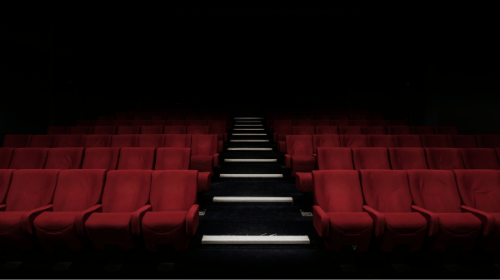It’s exciting that boundaries are disappearing, and PR, marketing, and ad agencies can compete with each other. Even better, the PR industry has taken steps towards becoming more creative. However, we can’t just wait for that next great campaign to give us a chance at Cannes. We need to actively encourage and aggressively foster creativity. It’s the only way our industry can catch up with the rest of the market. The blurring of categories means PR agencies are now continuously competing with a wide variety of agencies that have spent decades cultivating creativity within their organization.
The rise of the creative director
Standard practice for creative agencies has become a rising trend in PR: hiring a Creative Director. In the latest edition of “Creativity in PR”, research by the Holmes Report shows the emergence of this artistic conscience in PR agencies. A vast majority of agencies invested heavily in not only finding Creative Directors but also in kickstarting initiatives to raise the creative bar for concepts and campaigns.
Let’s get one misconception out of the way immediately; yes, the sectors are getting closer to each other but (former) PR agencies have a long way to go to catch up with the creative power of ad agencies. Most clients still don’t see PR agencies as the leading partner in a creative campaign. To solve this, we need to realize that the collective creativity of an agency needs specific management tools to thrive. This seems to be one of our industry’s most common lapses.
That same “Creativity in PR” report shows that 40 percent of agencies lack the processes to encourage imaginative approaches. They’re missing the key to creativity.
Leaders in our industry should give their utmost to integrate creativity into their agency’s DNA. How do you leverage the full potential of your organization? Here are four tips we’ve learned along the way.
1. Build time for play
Most people working in marketing or PR have an instinct for creative work. If not, they would’ve become accountants, legal experts or engineers. However, an unhurried space is essential to creativity. This can be quite a challenge for the average agency with demanding clients, lots of deadlines and a team of talented-but-often-young consultants and specialists.
Leadership teams in our industry must learn how to create a business environment where staff feel they have time and space to dig into a brief or strategy. This means that clients have to be educated as well. We need to make clients realize that the most brilliant work out there asks for more than 24 hours. This is a cultural shift for PR.
2. Shoot for the moon
For other types of agencies, creativity is their reason to exist. They focus on creative output 24/7; there’s a reason they return from Cannes with a suitcase full of Lions. For us, this means that we must use everything we have to give the best ad agencies at least a little bit of competition.
To do that, we need an agency culture where management, teams and clients challenge each other to take more creative risks. If you have a culture where people approve the first idea that comes along, no one will get better.
A Creative Director could play a significant role in forging an innovative culture. He or she can have a diagnostic view of every concept under development. There’s a delicate balance to find here, however. If the Creative Director pushes too much, people can crawl into their shell or get demotivated and believe that ‘the Creative Director should fix it, because it’s his responsibility’. That’s the diametric opposite of a culture where everybody has space to come up with new ideas.
3. Introduce a no-fly zone
It’s easy to fall into the stereotype that everyone on the agency side is outgoing. In reality, there are introverts in every office, luckily for everyone. Someone slower to offer an opinion can still have loads of creative talent. Stimulating creativity within teams with mixed personalities calls for a different approach.
Broadly speaking, extroverts get their energy from speed, enthusiasm and (a lot of) external incentives while introverts get their kicks from calm and stability. Extroverts excel in brainstorm sessions while introverts want to think in peace about a briefing.
Recently, a friend of mine told me about a new idea that helped both extroverts and introverts collaborate. A US company introduced a daily ‘no-fly zone’. It’s a daily time slot of two hours in which people can’t be distracted. This gives them uninterrupted time to dig into a briefing, campaign development or advice.
It’s an intriguing concept because many agencies deploy the opposite approach. In PR agencies, we feel we can always ask for help from colleagues and clients contact us around the clock for support. If you make sure everyone knows that you don’t want to be disturbed, you’ll get a Slack or a WhatsApp that starts ‘I know you’re busy but ….’.
Something like the no-fly zone could create daily peace of mind for everyone without detracting from the characteristics of an agency.
4. Stop obsessing over that one big idea!
This statement might be a bit too much, but our industry is pervaded by the belief that the ‘big idea’ is the Holy Grail for award-winning campaigns. It’s why everyone waits for an ad agency or that one creative person on their team to come up with brilliant ideas. The assumption is that these agencies or people wait around for a single brilliant outburst. Buying into that assumption diminishes a team’s daily creative potential.
Our teams at LEWIS often surprise and electrify me with a large number of small, creative ideas and perspectives in a quarterly plan, instead of yet another proposal for a big stunt or hoax. In my experience, a large amount of smaller ideas coming from a full team will more easily grow into a big or clever concept than an idea developed by one single creative person. I’ve come to believe that quantity, not quality, jumpstarts creative development within teams.
Leadership can drive creativity in our industry but getting to the next level will require more from all of us. We can build an environment in which the creative potential of the entire organization is realized.
As Edward de Bono once said: “Creative thinking, in terms of idea creativity, is not a mystical talent. It is a skill that can be practiced and nurtured.”



